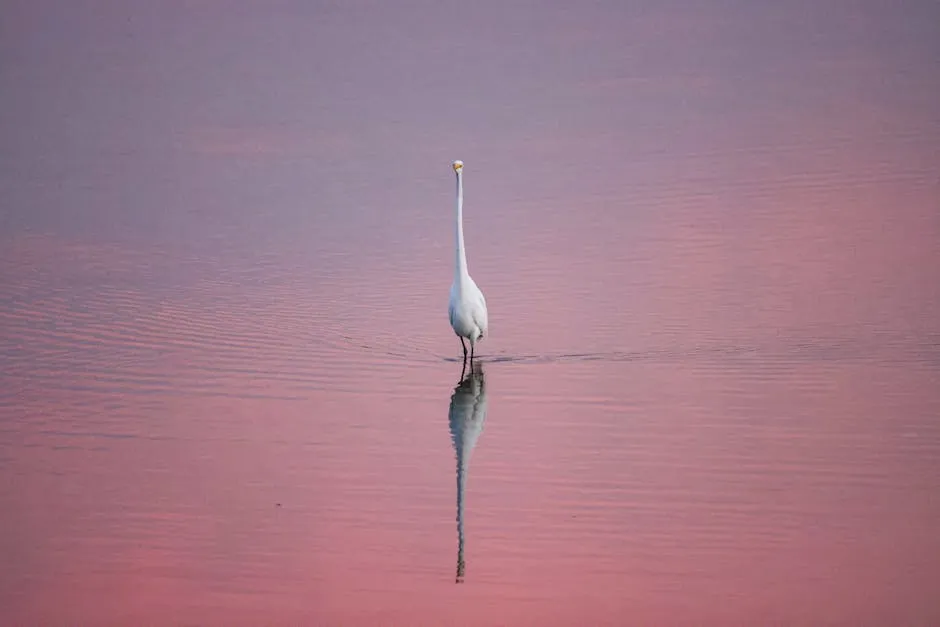Introduction
Zebra mussels (Dreissena polymorpha) are notorious for their invasive nature. Originally hailing from Eurasia, they’ve made themselves quite at home in North America. These tiny mollusks arrived in the U.S. during the late 1980s, thanks to ballast water from ships. Since then, they’ve wreaked havoc on ecosystems and economies alike.
Now, here comes the jaw-dropper: a single female zebra mussel can produce up to one million eggs in a single breeding season. Yes, you read that right! This astonishing reproductive ability is like inviting a party crasher who brings along an army.
The repercussions of such rapid reproduction are staggering. With that many offspring, zebra mussels can quickly overwhelm freshwater ecosystems. They compete with native species for resources, disrupt food webs, and even cause ecological havoc by filtering out phytoplankton. Economically, they inflict substantial damage, leading to costly management efforts. Estimates suggest that the annual economic impact of zebra mussels reaches over $500 million in North America.

Speaking of managing these little critters, a Zebra Mussel Control Kit could be your best friend! This kit includes everything you need to tackle these pesky invaders head-on and protect your local waterways. It’s like having an ecological superhero at your disposal!
It’s clear that these little critters are more than just a nuisance; they’re a full-blown ecological and economic crisis waiting to unfold.
Understanding Zebra Mussels
What Are Zebra Mussels?
Zebra mussels, scientifically known as Dreissena polymorpha, are small, freshwater bivalve mollusks. They can be identified by their distinct striped pattern, resembling a zebra—hence the name. These mussels originated from the Caspian and Black Sea regions, thriving in their native waters before setting sail for new territories.
Their introduction to North America occurred via ballast water from ships in the Great Lakes around the 1980s. Once they arrived, they brought along their knack for rapid reproduction and survival. Today, zebra mussels can be found in over 30 states across the U.S. and numerous provinces in Canada.
These mollusks are filter feeders, which means they consume tiny organisms from the water while simultaneously creating a clearer environment. Sounds beneficial, right? Well, not so fast! This filtering action can deplete phytoplankton, a crucial food source for many aquatic organisms, leading to significant disruptions in local food webs.
In summary, zebra mussels are tiny but mighty invaders that pose a serious threat to North America’s aquatic ecosystems and the economy. With their extraordinary reproductive capacity and adaptability, they’ve proven to be formidable foes in the fight to maintain ecological balance.

If you want to dive deeper into the topic of aquatic invasive species, check out the Aquatic Invasive Species Handbook. It’s a must-read for anyone interested in understanding how these invasive species impact our ecosystems.
Ecological and Economic Impacts
Zebra mussels are more than just tiny invaders; they’re ecological wrecking balls. These little mollusks wreak havoc on native species and ecosystems. They have a knack for outcompeting local wildlife, leading to a decline in biodiversity. Imagine a buffet where zebra mussels are the only diners. They feast on phytoplankton, leaving little for fish and other aquatic organisms. This filtering action not only starves native species but also alters the entire food web.
As they multiply, zebra mussels create dense colonies that change habitats. They attach to hard surfaces, smothering native mussels and disrupting their feeding and reproductive abilities. This invasion often leads to significant declines in native mussel populations, some of which are already endangered. Researchers have noted that these mussels can alter the very structure of aquatic ecosystems.
But wait, it doesn’t stop there! The economic impacts are staggering. Managing zebra mussels costs North America over $500 million annually. Yes, you read that right! Water treatment plants, power plants, and recreational industries are hit hardest. Zebra mussels clog pipes, leading to costly repairs and increased filtration expenses.
Boaters and fishermen also feel the pinch. They face reduced fish populations and increased maintenance on their vessels. The presence of these pests can make once-thriving fishing spots less appealing, affecting local economies dependent on tourism and fishing.

In summary, zebra mussels disrupt ecosystems and drain financial resources. Their ecological footprint is massive, and managing their spread requires ongoing efforts and funding. As we continue to battle this invasive species, understanding their impact is crucial for protecting our waterways and preserving native wildlife.
Lifecycle and Environmental Adaptations
Zebra mussels, scientifically known as Dreissena polymorpha, undergo a fascinating lifecycle. They start as tiny larvae, known as veligers, which float around in the water column. This stage lasts about 2-3 weeks. During this time, they drift with currents, making their way to new territories. Once they reach a suitable hard surface, they settle down and transform into juvenile mussels.
These veligers have a remarkable dispersal method. They can hitch a ride on boats, trailers, and even fishing gear, spreading their reach far and wide. This mobility is a key reason they’ve become such a widespread invasive species.
As adults, zebra mussels are not picky when it comes to their living conditions. They can thrive in a variety of substrates, including rocks, pipes, and even other mussels. This adaptability is a massive factor in their success as invaders. They can live in freshwater systems with varying temperatures and nutrient levels, making them formidable opponents for native species.
Zebra mussels are well-known for their rapid reproduction rate. A single female can produce up to one million eggs in a breeding season! With such an impressive output, it’s no wonder they can quickly dominate ecosystems. Their ability to reproduce and adapt to diverse environments makes them a persistent threat in the waterways they invade.

In summary, zebra mussels exhibit a complex lifecycle and exceptional adaptability. Their larval stage allows for widespread distribution, while their resilience to different substrates and conditions fuels their invasive success. Understanding these traits is crucial in tackling the challenges they pose to ecosystems and economies.
If you’re planning to venture out on the water, don’t forget to protect your gear with a Waterproof Dry Bag. It keeps your belongings safe and dry, ensuring that you can focus on enjoying your outdoor adventures!
Case Studies and Real-World Examples
Case Study 1: The Great Lakes
The Great Lakes region has faced a zebra mussel invasion that’s nothing short of catastrophic. These tiny invaders, first spotted in Lake Erie in the late 1980s, have spread like wildfire. Today, they inhabit all five Great Lakes, causing massive ecological and economic upheaval.
In the ecosystem, zebra mussels have transformed the food web. By filtering out large amounts of phytoplankton, they’ve reduced the food available for native species. This dietary shift has caused serious declines in fish populations, including vital species like walleye and perch. Imagine a buffet where only zebra mussels get to eat! The result? A less diverse aquatic community and fewer fish for anglers to catch.
The economic toll is staggering. Local governments and industries spend over $500 million annually just to manage these little critters. Water treatment plants and power facilities face increased maintenance costs as zebra mussels clog intake pipes and cooling systems. It’s like trying to drink a milkshake through a straw that’s been stuffed with cotton balls!

To combat this invasion, authorities have implemented various control measures. These include chemical treatments and public education campaigns. Boaters are encouraged to clean, drain, and dry their boats to prevent further spread. Yet, local authorities face ongoing challenges. Funding is limited, and the mussels continue to invade new areas despite best efforts. The fight against zebra mussels in the Great Lakes is a constant battle—one that demands vigilance, funding, and community involvement.
Case Study 2: Minnesota’s Lakes
Minnesota is another battleground in the war against zebra mussels. First discovered in the state in 1992, these invaders have rapidly spread to over 275 lakes and rivers. Their presence threatens not just local ecosystems but also Minnesota’s thriving $5 billion summer tourism and fishing economy.
One shocking statistic? The infamous Lake Mille Lacs, once a prime fishing destination, now hosts around 2 trillion zebra mussels. Picture that: 2 trillion tiny mussels in one lake! This population explosion has led to significant declines in walleye populations, forcing a ban on walleye fishing to protect dwindling stocks. Talk about turning a beloved fishing spot into a disappointment!
The economic repercussions ripple through communities. Property values around infested lakes have fallen, with estimates suggesting a 16% decrease in value for lakeshore properties. Imagine buying a vacation home, only to find it’s worth significantly less due to invasive species. This economic strain can impact local businesses that rely on fishing, boating, and tourism.
Minnesota’s Department of Natural Resources (DNR) has stepped up efforts to manage this invasion, spending millions on research and control measures. Boat inspections and public awareness campaigns aim to slow the spread. Yet, with zebra mussels infiltrating new lakes each year, the challenge remains daunting. The fight against these invasive mussels is crucial for the health of Minnesota’s lakes and its economy.

In summary, both the Great Lakes and Minnesota’s lakes provide stark examples of zebra mussels’ impact. From ecological disruption to economic consequences, these invasive species are a challenge that requires ongoing attention and innovative management strategies. Without concerted efforts, the future of these vital aquatic ecosystems hangs in the balance.
Conclusion
Zebra mussels (Dreissena polymorpha) are not just your average aquatic invaders; they are like the party guests who never leave and clutter up the place! The alarming statistic that a single female can produce up to one million eggs in a breeding season is just the tip of the iceberg. This staggering reproductive ability leads to rapid population growth, which can spiral out of control. In fact, it can take only a few years for zebra mussels to overwhelm freshwater ecosystems and wreak havoc on the local aquatic life.
The ecological implications are profound. By filtering out vast amounts of phytoplankton, zebra mussels significantly reduce the food available for native fish and other organisms. This disruption shifts the entire food web, often leading to declines in biodiversity. Imagine a buffet where only zebra mussels are allowed to eat; everyone else is left hungry and struggling!
Economically, the impact is equally sobering. The estimated cost of managing zebra mussels in North America exceeds $500 million annually. This figure encompasses expenses related to maintenance of water treatment plants, repairs from infrastructure damage, and losses in the fishing and tourism industries. Infested water bodies can become less appealing for recreation, impacting local economies that rely on fishing and tourism. Property values around infested lakes also tend to drop, creating long-term financial challenges for local communities.

Given these alarming statistics, it is clear that continued research, public awareness, and effective management strategies are essential. Public education campaigns can help encourage boaters to adopt practices like cleaning, draining, and drying their watercraft to prevent the spread of these pests. Additionally, ongoing research into innovative control methods could provide new solutions to combat zebra mussels effectively.
Ultimately, the battle against zebra mussels is not just about protecting our aquatic ecosystems; it is also about preserving the livelihoods of those who depend on these waters. By raising awareness and taking action, we can work together to mitigate the effects of this invasive species and safeguard the future of our precious freshwater resources.
FAQs
What are zebra mussels?
Zebra mussels are small, freshwater bivalve mollusks, scientifically known as Dreissena polymorpha. They are characterized by their distinctive black and yellow striped shells. Originally from Eurasia, these invasive species were introduced to North America in the 1980s via ballast water from ships. They thrive in freshwater ecosystems, often causing significant ecological and economic damage.
How do zebra mussels impact ecosystems?
Zebra mussels are filter feeders, meaning they consume microscopic organisms in the water, including phytoplankton. While their filtering can lead to clearer water, it also depletes essential food sources for native species. This disruption can create a ripple effect throughout the food web, leading to declines in fish populations and altering community dynamics. As they proliferate, they can also smother native mussels and other organisms, further harming biodiversity.
What should I do if I find zebra mussels?
If you encounter zebra mussels, it’s important to report the sighting to local wildlife authorities. Take steps to prevent their spread by cleaning any boats or equipment that have come into contact with water. Be sure to remove any mud, plants, or mussels before moving between different bodies of water. Properly draining all bilge water and drying your equipment can help minimize the risk of introducing zebra mussels to new areas.
Why are zebra mussels considered a threat?
Zebra mussels pose significant ecological threats by outcompeting native species for food and habitat. They can dramatically alter local ecosystems, leading to declines in fish populations and biodiversity. Economically, they create costly problems for water infrastructure, requiring extensive management and repair efforts. Their rapid reproduction rates and ability to thrive in various conditions make them particularly challenging to control.
How can zebra mussels be controlled?
Control methods for zebra mussels include chemical treatments, biological controls, and physical removal. Public education is also vital in preventing their spread. Practices like inspecting and cleaning boats, trailers, and other equipment are crucial. Community involvement in reporting sightings can aid in early detection and management efforts. Ongoing research into innovative control strategies will continue to play a key role in addressing this invasive species.
To learn more about the ecological impacts of zebra mussels, check out this article on what is a shocking statistic about zebra mussels.
If you’re looking to enhance your outdoor experience, consider investing in a Fishing Rod and Reel Combo. It’s perfect for those weekends by the lake, giving you the right tools to catch dinner and impress your friends!
Please let us know what you think about our content by leaving a comment down below!
Thank you for reading till here 🙂
All images from Pexels




